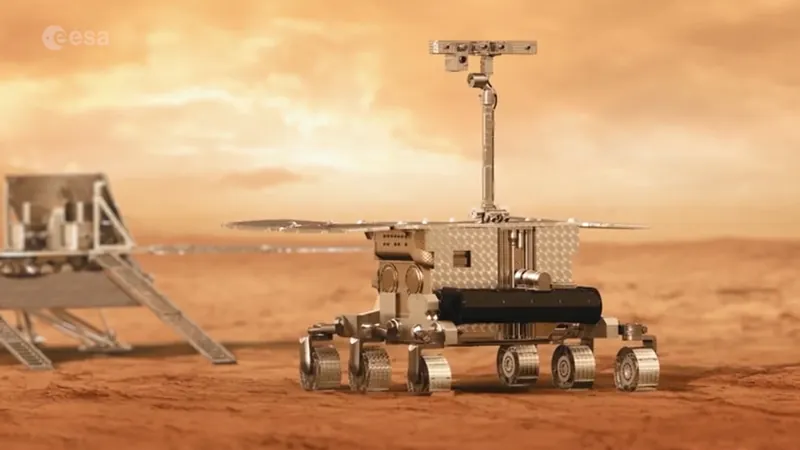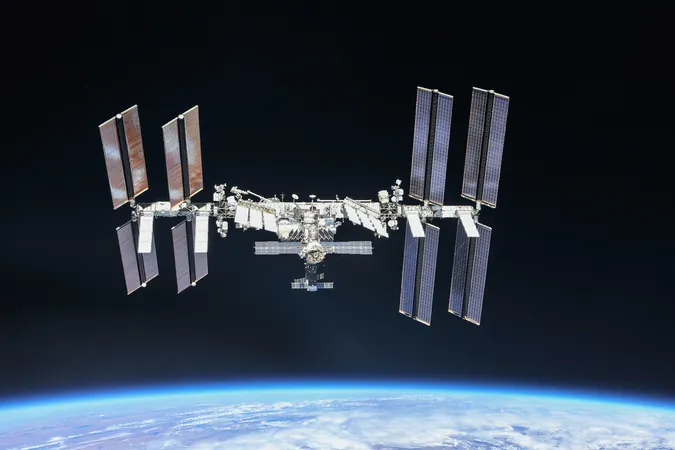
Secrets of Ancient Mars: Rosalind Franklin Rover Set for Game-Changing Discoveries
2025-09-19
Author: Mei
Exciting news from the cosmos! Recent studies unveiled at the Europlanet Science Congress suggest that the European Space Agency's (ESA) highly anticipated Rosalind Franklin rover might be poised to uncover ancient organic material on Mars—more than we ever dared hope!
The rover's launch site, the clay-rich Oxia Planum, has emerged as a treasure trove for potential Martian discoveries. A groundbreaking study led by Dr. Aleksandra Sokołowska from Brown University and Imperial College London identified a staggering 258 rockfalls in the region, thanks to high-resolution images captured by NASA's Mars Reconnaissance Orbiter (MRO).
But why are these rockfalls so significant? Many of them could expose materials hidden beneath the Martian surface, unlocking access to subsurface dirt that might contain clues about ancient life.
"The discovery of these rockfalls opens a thrilling opportunity for the rover to retrieve samples that would otherwise remain off-limits," Sokołowska remarked, highlighting the rover's potential to diversify its findings.
Many of these newly exposed rocks have been shielded from harsh Martian radiation, increasing the likelihood that organic molecules may still be intact. This protective layer could be a game changer on the quest for life beyond our planet.
Another study, headed by Ananya Srivastava from the University of Western Ontario, shines a light on layered clay deposits found at Oxia Planum. Clays are renowned for their remarkable ability to preserve organic materials. Spectral analysis from MRO and ESA's Mars Express has revealed intriguing alternating layers of orange and blue clays, hinting that they were transported via ancient rivers and floods.
"If these clays originated from multiple sources, they could document a wider array of ancient Martian climates than we previously realized," Srivastava explained. This variability could elevate the chances of finding preserved organic molecules—a tantalizing prospect for astrobiologists eager to unlock the mysteries of life beyond Earth.
Armed with cutting-edge technology, the Rosalind Franklin rover is designed to go deeper than any previous Martian exploration efforts. With a drill capable of reaching depths of over six feet (two meters), the rover is ready to unveil secrets buried for eons.
Initially slated for a 2022 launch, the mission has faced a series of challenges, including shifts in international partnerships and conflicts. The Rosalind Franklin rover—named after the pioneering British chemist crucial in decoding the DNA structure—is now set to embark on its cosmic journey in 2028.
As we prepare for this groundbreaking mission, the possibilities of discovering clues about ancient life on Mars are more exhilarating than ever!





 Brasil (PT)
Brasil (PT)
 Canada (EN)
Canada (EN)
 Chile (ES)
Chile (ES)
 Česko (CS)
Česko (CS)
 대한민국 (KO)
대한민국 (KO)
 España (ES)
España (ES)
 France (FR)
France (FR)
 Hong Kong (EN)
Hong Kong (EN)
 Italia (IT)
Italia (IT)
 日本 (JA)
日本 (JA)
 Magyarország (HU)
Magyarország (HU)
 Norge (NO)
Norge (NO)
 Polska (PL)
Polska (PL)
 Schweiz (DE)
Schweiz (DE)
 Singapore (EN)
Singapore (EN)
 Sverige (SV)
Sverige (SV)
 Suomi (FI)
Suomi (FI)
 Türkiye (TR)
Türkiye (TR)
 الإمارات العربية المتحدة (AR)
الإمارات العربية المتحدة (AR)